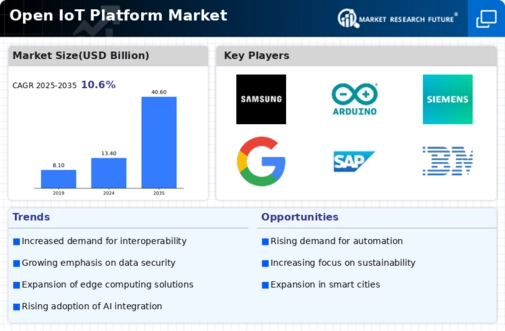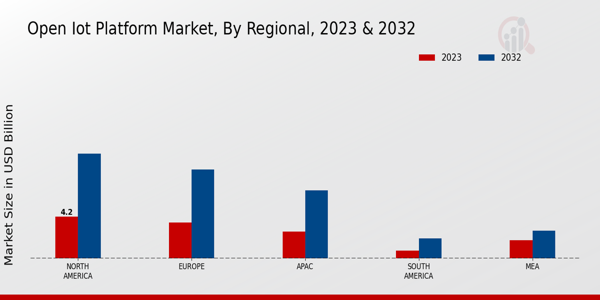Market Trends
Key Emerging Trends in the Open IoT Platform Market
The market trends in the Open IoT Platform sector reflect a dynamic landscape driven by technological advancements and evolving consumer needs. Open IoT platforms have gained significant traction due to their flexibility, interoperability, and ability to integrate diverse devices and applications seamlessly. One prominent trend is the growing adoption of open-source solutions, fueled by the desire for cost-effective and customizable IoT solutions. Companies are increasingly turning to open IoT platforms to avoid vendor lock-in and leverage community-driven innovation.
Interoperability remains a key focus area in the Open IoT Platform market. As IoT ecosystems become more complex, there is a growing demand for platforms that can seamlessly connect devices and applications from different vendors. Interoperable platforms enable greater flexibility and scalability, allowing organizations to deploy diverse IoT solutions without compatibility issues. Standards such as MQTT and OPC UA play a crucial role in facilitating interoperability and driving market growth.
Security continues to be a top priority for organizations deploying IoT solutions, and this is reflected in the market trends of Open IoT platforms. With the proliferation of connected devices, the attack surface for cyber threats has expanded, making robust security features essential. Open IoT platforms are incorporating advanced security mechanisms such as end-to-end encryption, authentication protocols, and anomaly detection to safeguard data and devices from potential threats. Additionally, the adoption of blockchain technology for secure data exchange and identity management is gaining traction in the market.
Edge computing is emerging as a significant trend shaping the Open IoT Platform market. By processing data closer to the source, edge computing reduces latency, bandwidth usage, and reliance on centralized cloud infrastructure. Open IoT platforms are incorporating edge computing capabilities to support real-time analytics, AI-driven insights, and low-latency applications such as industrial automation and autonomous vehicles. Edge computing also enhances data privacy and regulatory compliance by keeping sensitive information localized.
Artificial Intelligence and Machine Learning are increasingly being integrated into Open IoT platforms to unlock new insights and drive predictive analytics. AI-powered algorithms analyze vast amounts of sensor data in real-time, enabling proactive maintenance, predictive analytics, and personalized services. Open IoT platforms leverage AI and ML to optimize resource utilization, improve operational efficiency, and enhance decision-making across various industries, including manufacturing, healthcare, and smart cities.
The proliferation of 5G networks is poised to accelerate the adoption of Open IoT platforms, enabling high-speed, low-latency connectivity for a wide range of IoT devices and applications. 5G networks provide the bandwidth and reliability required to support bandwidth-intensive applications such as augmented reality, virtual reality, and autonomous vehicles. Open IoT platforms are leveraging 5G connectivity to enable new use cases, improve scalability, and enhance user experiences in diverse industries.
The integration of IoT with other emerging technologies such as augmented reality (AR), virtual reality (VR), and blockchain is driving innovation in the Open IoT Platform market. AR and VR technologies enhance user experiences, improve training simulations, and enable immersive remote collaboration in industrial settings. Blockchain technology ensures data integrity, transparency, and trust in IoT transactions, making it ideal for applications such as supply chain management, smart contracts, and asset tracking.
















Leave a Comment